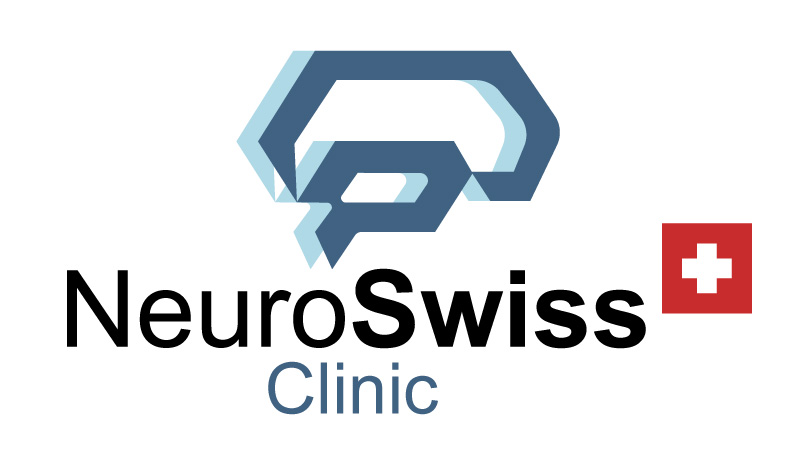Integrated & personalized approach
For the most effective and faster treatment, we collaborate with specialists in Switzerland and internationally—psychotherapists, neurologists, psychiatrists, neuropsychiatrists.
We combine advanced brain evaluation with modern neurotherapy and psychotherapy so every patient receives a complete, personalized plan.
Brain Map / QEEG = Quantitative EEG
QEEG (Quantitative Electroencephalography) is a mathematical analysis of the brain’s electrical activity, recorded via EEG and compared against an age-normed database. The evaluation is non-invasive, performed with dry sensors (comfortable and quick).
iMediSync uses artificial intelligence to interpret QEEG, generating clear, intuitive visual reports (color maps and statistical indicators) that show where and by how much brain activity differs from the average of a healthy, age-matched population.
What it measures (frequency bands, in brief)
- Delta (0.5–4 Hz): deep sleep, repair. ↑ during wakefulness → fatigue, slowing; post-injury.
- Theta (4–8 Hz): creativity, daydreaming. ↑ frontal → inattention/“scatter”; excessive ↓ → rigidity.
- Alpha (8–12 Hz): calm–alert state, visual integration. ↑ occipital is normal with eyes closed; ↓ may indicate hypervigilance.
- SMR (12–15 Hz): bodily stillness + focus. Common neurofeedback target for hyperactivity/impulsivity.
- Beta (13–30 Hz): active thinking. High-beta (20–30 Hz) ↑ → overstimulation/anxiety, tension.
- Gamma (30–45+ Hz): fine sensory processing/integration; interpret clinically with caution.
What it’s useful for (typical indications)
QEEG doesn’t diagnose on its own, but provides objective markers that help with:
- Attention/ADHD: excess theta and/or frontal theta/beta↑; low SMR.
- Anxiety/hyperarousal: high-beta↑ frontal/central; abnormal control-network coherence.
- Depression: frontal alpha asymmetry (e.g., alpha↑ left); reduced eyes-open reactivity.
- Insomnia/rumination: nocturnal beta↑, SMR↓; hypervigilance.
- Headache/migraine: regional imbalances and aberrant coherence in sensory networks.
- Post-traumatic (TBI/concussion): focal delta/theta↑, disrupted connectivity.
- PTSD/trauma: hypervigilance (high-beta↑), incoherence between emotional and executive networks.
Short examples
- “Inattentive child”: frontal theta↑ + SMR↓ → protocol to increase SMR 12–15 Hz.
- “Anxiety”: frontal high-beta↑ → train down high-beta and up alpha/SMR.
- “Insomnia”: SMR training + sleep hygiene; monitor decrease in high-beta.
Why it matters for clinicians
- Provides objective markers of brain function before, during, and after interventions.
- Guides selection of interventions and neurofeedback protocols (which frequencies/regions to target).
- Integrates naturally with psychotherapy/psychiatry and adjunct methods like PBM (photobiomodulation) and Neurofeedback.
- This collaboration accelerates progress, especially when therapy sessions (any approach) are complemented by PBM and Neurofeedback.
Key benefits of Brain Map (QEEG)
- Reveals whether the brain’s “rhythm/timing” is dysregulated—and where.
- Shows which regions need support (that may affect sleep, attention, emotions, learning).
- Helps decide which therapy to choose and how to set neurofeedback.
- Informs better medication decisions, reducing trial-and-error.
- Explains why previous approaches may not have worked and what to change.
Limitations & data quality
- Artifacts (blinking, movement, muscle tension, poor electrode contact) can alter results—proper preparation matters.
- Medication (e.g., stimulants, sedatives) influences EEG; mapping “on” vs. “off” medication is decided individually.
- Context: the map reflects the state on that day; sleep, caffeine, stress can shift the profile.
- Therefore, it is essential to strictly follow all preparation instructions both before and on the day of the scan.
- “Brain Mapping Preparation Protocol / Protocollo di Preparazione al Brain Mapping”
What QEEG does not do
- It does not “read thoughts.”
- It does not replace clinical EEG when epilepsy or neurological emergencies are suspected.
- It is not used alone for diagnosis; it’s integrated with history, clinical scales, interview, and other investigations (MRI/PET, psychological testing).
How it helps in treatment planning
- Personalized objectives: which bands/regions to adjust (e.g., reduce frontal high-beta; increase central SMR).
- Neurofeedback protocols: target frequencies, electrode sites, progress criteria.
- Multimodal integration: breathing/relaxation, PBM, sleep hygiene, cognitive exercises, lifestyle recommendations.
- Monitoring: repeating the Brain Map shows objective change (e.g., z-scores normalize toward 0; coherence balances).
